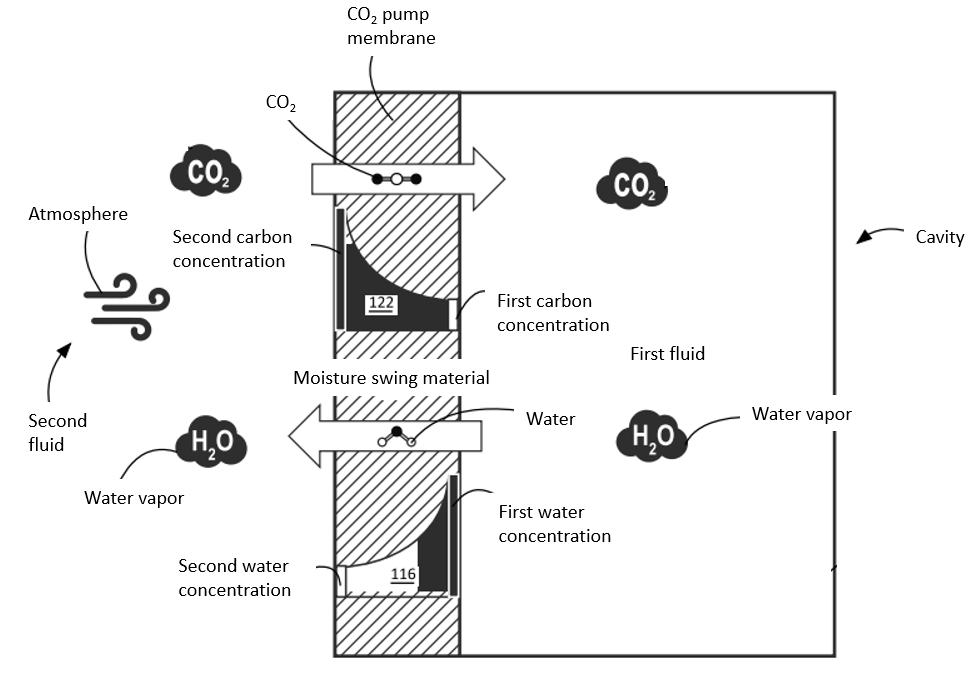Background
Direct air capture devices can passively collect atmospheric carbon dioxide from the ambient air using sorbent materials and subsequently release it for use or sequestration. However, most direct air capture systems able to operate efficiently collect carbon dioxide in a batch process, gathering in one phase and releasing in another. Not only does this complicate producing a continuous stream of concentrated CO2, but it also requires the use of mechanisms to transition between a collection phase and a release phase. These mechanisms eat into an already thin energy budget, and provide numerous potential points of failure (e.g., seals, valves, lifts, doors).
Invention Description
Researchers at Arizona State University have developed a continuous CO2 capture system that includes a CO2 pump membrane, a moisture-swing material, and a cavity having a first fluid. The CO2 pump membrane separates the first fluid from a second fluid, creating a water concentration gradient across the membrane and transport of water through the membrane. The water concentration gradient creates a carbon concentration gradient across the membrane that decreases moving from outside the cavity to inside the cavity. As water is continuously transported from the first fluid to the second fluid through the CO2 pump membrane due to the water concentration gradient, carbon dioxide is continuously captured from the second fluid by the moisture-swing material of the CO2 pump membrane and continuously pumped along the carbon concentration gradient across the CO2 pump membrane and into the first fluid within the cavity.

A schematic view of device for continuous CO2 capture using a CO2 pump membrane and water vapor.